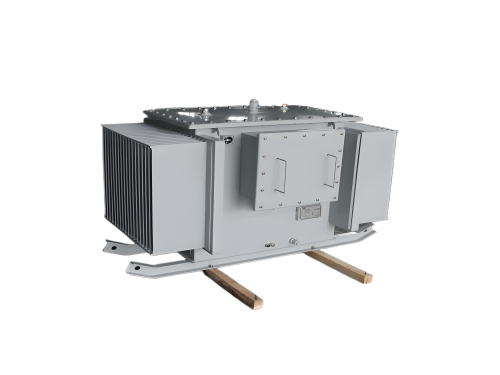

Inquiry

Project Review

Machining

Quality Control

Pass/Fail

Delivery
Here is the English translation of the requirements for the grounded operation of mining transformers:
Requirements for the Grounded Operation of Mining Transformers:
Neutral Point Grounding Restrictions:
Prohibition of Direct Neutral Grounding for Underground Transformers: In coal mine underground environments, which are damp and contain flammable gases (such as methane), direct neutral grounding of transformers can generate large current sparks in the event of a single-phase grounding fault, potentially triggering an explosion. Therefore, neutral point insulation or grounding through arc suppression coils must be adopted to limit fault currents.

Isolation of Surface and Underground Power Supplies: Transformers or generators with directly grounded neutral points on the surface must not supply power directly to underground installations. If a shared transformer is necessary, an isolation transformer (with a voltage ratio of 1:1) must be used to change the neutral grounding method to non-direct grounding, ensuring the safety of underground power usage.
Protective Grounding Implementation Standards:
Scope of Grounding: The metal enclosures, frameworks, and steel strips (or wires) of armored cables of electrical equipment with voltages above 36V must be grounded to form a comprehensive grounding network.
Main Grounding Electrode Installation: Main grounding electrodes should be immersed in water sumps. The total grounding network at each level of the mine must be connected to the main grounding electrodes in both the main and auxiliary water sumps. Main grounding electrodes should be made of corrosion-resistant steel plates with an area of not less than 0.75 m² and a thickness of not less than 5 mm.
Local Grounding Electrode Requirements:
Local grounding electrodes must be installed in mining district substations, equipment chambers containing electrical installations, high-voltage equipment, low-voltage distribution points (with three or more devices), and coal mining faces without low-voltage distribution points.
Local grounding electrodes can be placed in roadway gutters (with a steel plate area of not less than 0.6 m² and a thickness of not less than 3 mm) or in other damp locations (using steel pipes with a diameter of not less than 35 mm and a length of not less than 1.5 m, vertically embedded in the floor with a burial depth of not less than 0.75 m).
Grounding Materials and Connections:
Grounding wires and auxiliary grounding busbars should be made of bare copper wires with a cross-sectional area of not less than 50 mm², galvanized iron wires with a cross-sectional area of not less than 100 mm², or galvanized flat steel with a thickness of not less than 4 mm and a cross-sectional area of not less than 100 mm².
Connecting wires should be made of bare copper wires with a cross-sectional area of not less than 25 mm², galvanized iron wires with a cross-sectional area of not less than 50 mm², or galvanized flat steel with a thickness of not less than 4 mm and a cross-sectional area of not less than 50 mm².
The use of aluminum conductors as grounding electrodes, busbars, or connecting wires is strictly prohibited.
Grounding Resistance Control:
Total Grounding Network Resistance: When any main grounding electrode is disconnected, the total resistance of the grounding network formed by the remaining main grounding electrodes must not exceed 2 Ω.
Mobile Equipment Resistance: The resistance value of the protective grounding wire between each mobile or handheld electrical device and the grounding network must not exceed 1 Ω.
Routine Maintenance and Inspection:
Regular Inspections: For electromechanical chambers with on-duty personnel and equipment operated by dedicated drivers, grounding conditions should be inspected once per shift. Other equipment should be inspected at least once a week.
Resistance Testing: The resistance of the underground total grounding network should be measured at least once per quarter. New installations must be tested and data recorded before being put into operation.
Damage Repair: If any damage to the grounding device is detected, it must be repaired immediately. The equipment must not be energized until the repair is completed.
Additional Requirements for Special Scenarios:
Three-Phase Four-Wire Transformers: In surface three-phase four-wire power supply systems, the neutral point of the transformer must be grounded to stabilize phase voltages and provide a zero-line potential, ensuring the timely operation of protective devices.
Grounding of Mobile Substations: The grounding cores of the high- and low-voltage side rubber-sheathed cables must be connected to the grounding terminals inside the inlet devices. Independent connecting wires should be used to connect the switchgear and the external grounding screws of the transformer to the grounding busbar.

The main products include oil immersed transformers, dry-type transformers, power transformers, amorphous alloy transformers, mining transformers, box type substations, high and low voltage switchgear and supporting products
Add: South Head of Mount Huangshan Road, Liaocheng Development Zone, Shandong, China
Email:sdbyqcj@163.com
Tel: +86 13706354419